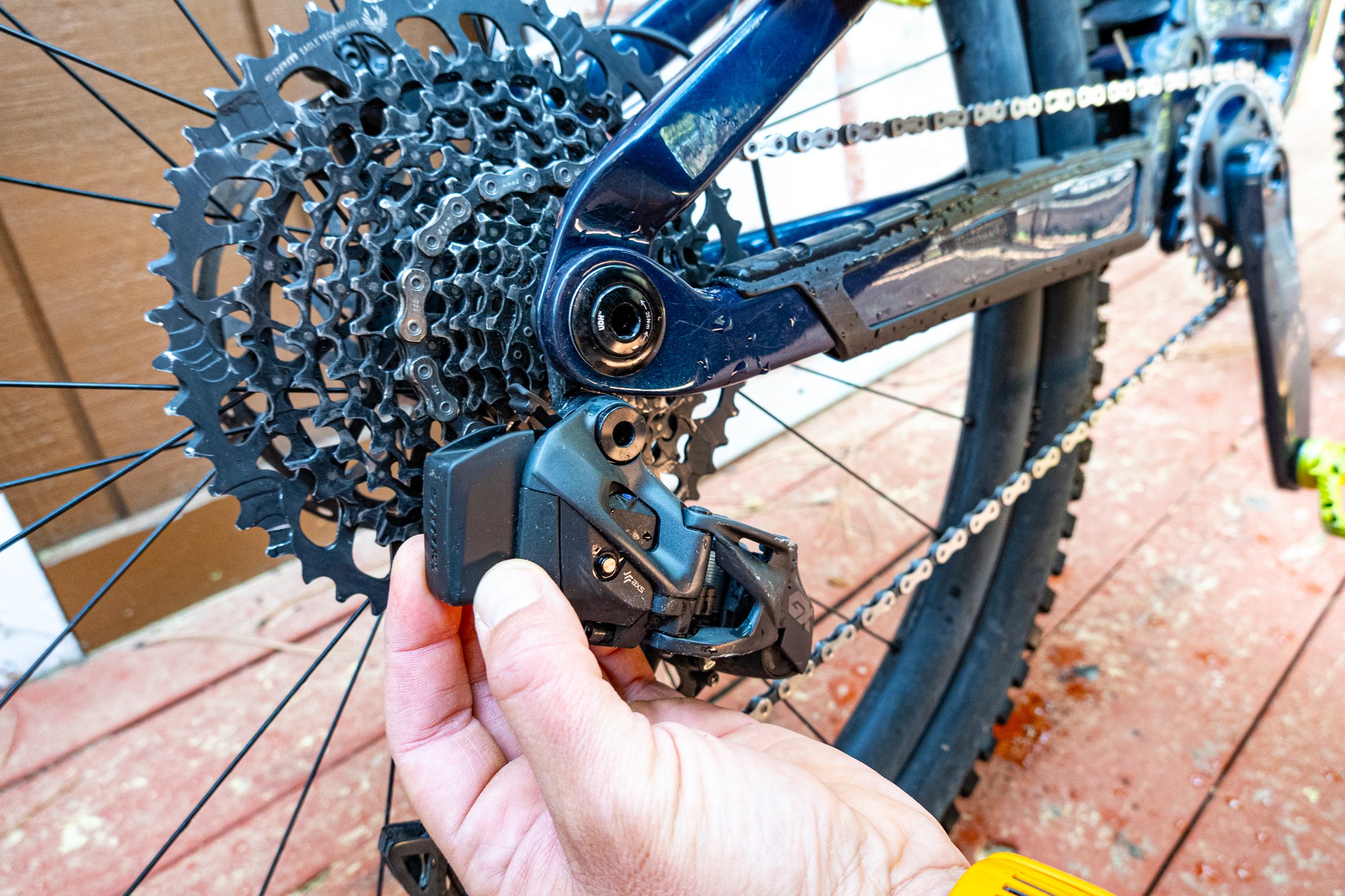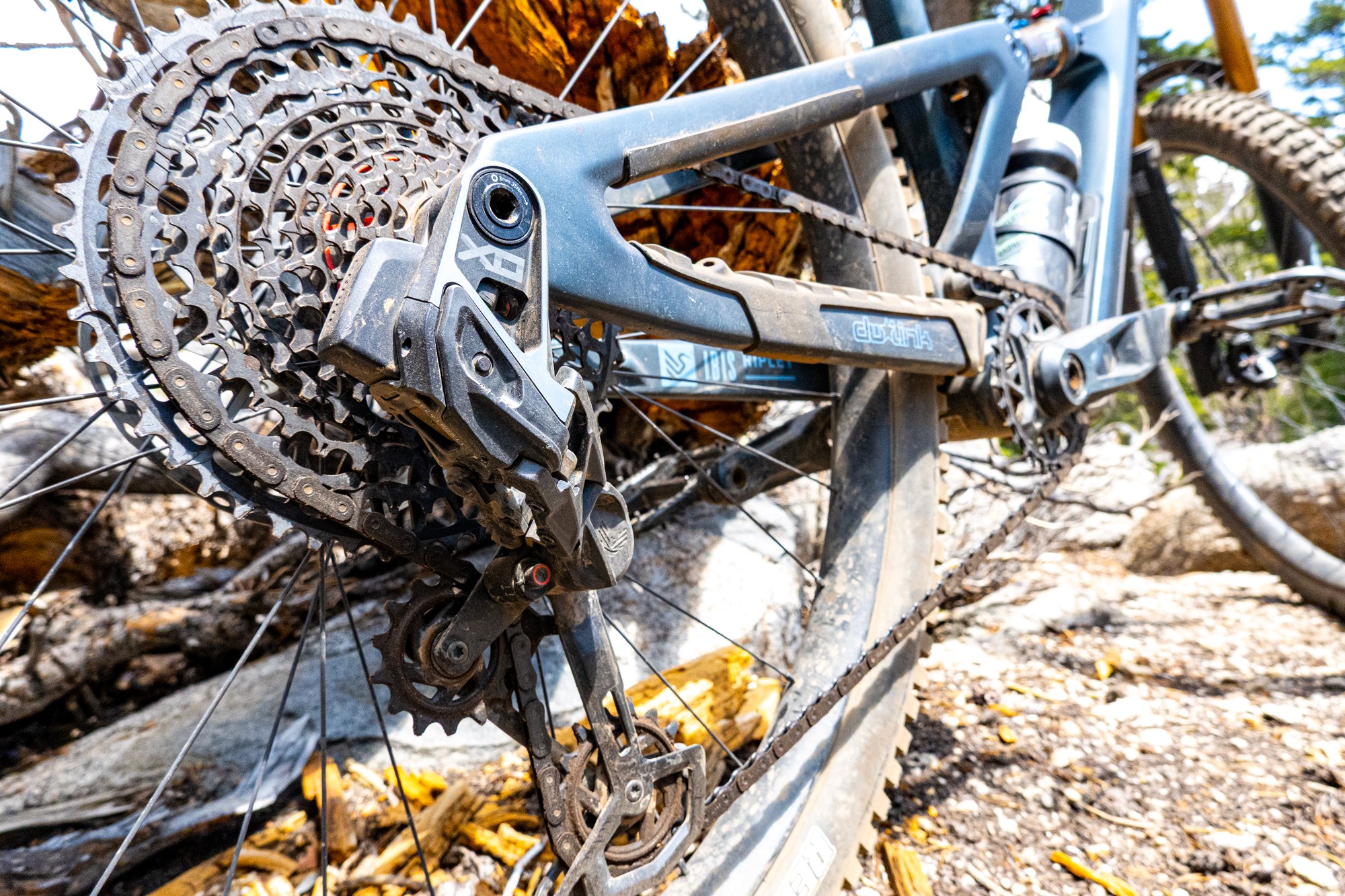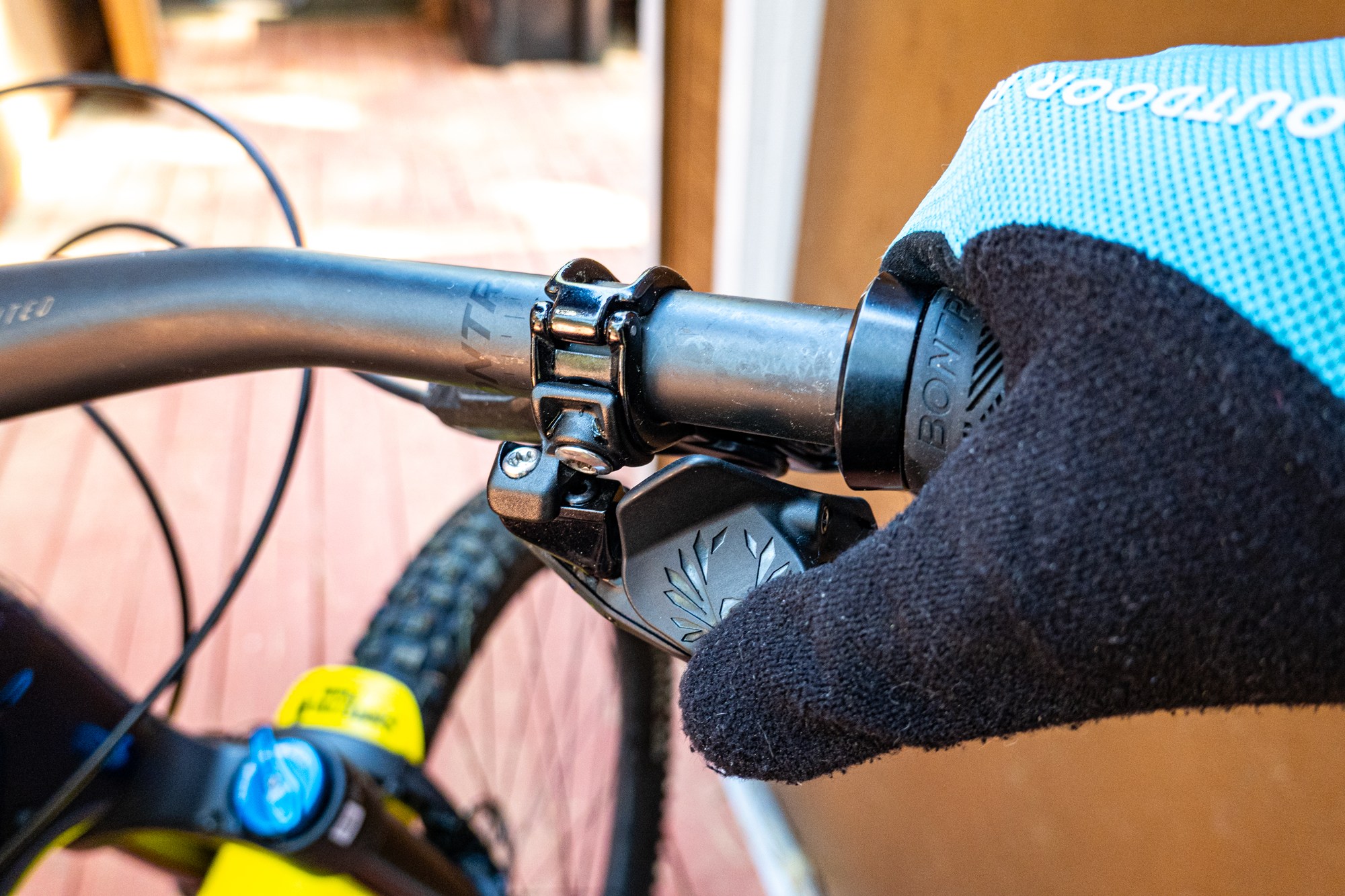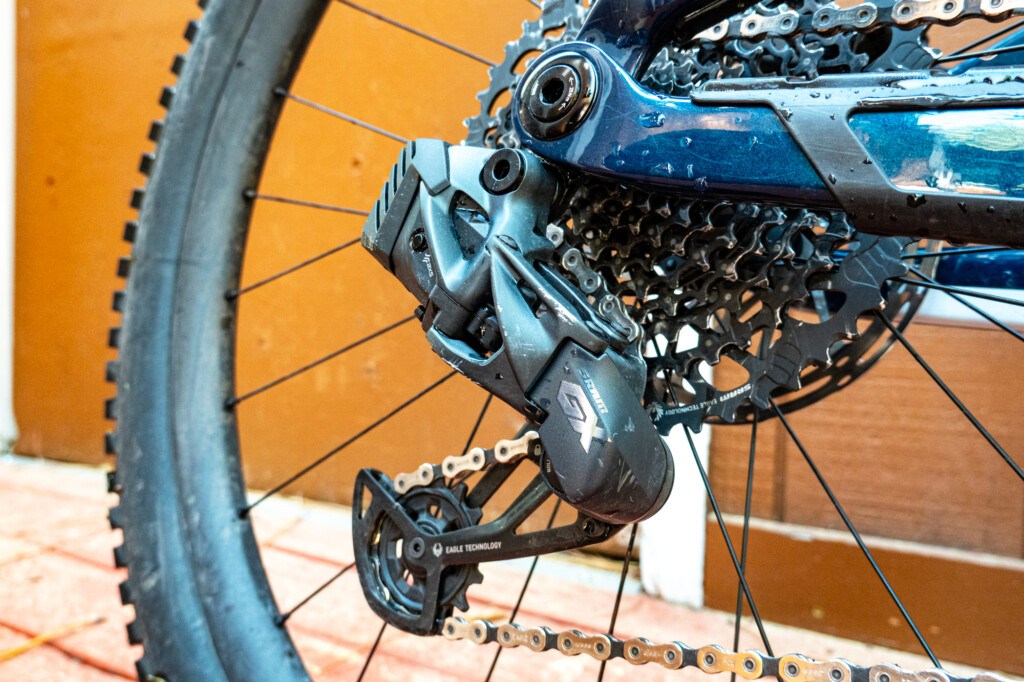Lots of folks out there live for the latest tech—first in line for new gadgets, chasing every trend. Me? Not so much. I’m the type who’d rather patch it up and keep it rolling than ditch it for something shiny and new. But… after upgrading my mountain bike, I had to make the leap to electronic shifting. At first, I was skeptical. A whole year later? I’m not saying it’s flawless, but I gotta admit—I’m a believer now. Smooth, snappy, and surprisingly tough, it’s won me over on the trail.
The Verdict – Not A Gimmick
If you’re the kind of rider who’d rather spend more time in the saddle than wrenching on your bike, wireless electronic shifting is worth a serious look. I’ve been running the SRAM Eagle AXS, and while it’s not without quirks—like struggling a bit under extreme tension—it more than makes up for it with rugged reliability and buttery-smooth shifting.
One heads-up though: keep an eye on that battery indicator. If it dies mid-ride, you could find yourself stuck in the same gear miles from the trailhead. Keep reading on how we know.
SRAM Eagle GX AXS Specs
- Battery life: ~25 hours
- Free AXS App: provides information on battery life & ability to adjust derailleur
- Price: $625
- Buy from: Backcountry.com
Elephant in the Room – Battery Life

According to SRAM’s documentation, you should get around 25 hours of ride time per charge with their electronic shifting. When I first got the system, I fully charged the battery and rode it until it died. On that first run, I actually squeezed out about 40 hours before it finally gave out—leaving me stuck in one gear for the ride down. Not ideal.
Now that I’m riding 3–4 times a week, I keep a close eye on battery levels. As a rule of thumb, I give it a full charge once a month or right before any big ride, just to avoid having to think about it mid-ride.
What I Love About Them

One of the biggest reasons I had to upgrade my bike was maintenance—plain and simple. It was getting exhausting. The biggest headache? My rear derailleur. Every couple of weeks (sometimes even less), it was either in the shop or I was out there tweaking the limit screws and cable tension just to get it shifting somewhat smoothly. Total pain.
Enter the SRAM Eagle AXS electronic shifting—an absolute game-changer. Since switching over, I haven’t had to touch the derailleur once. No fine-tuning, no fiddling.

Sure, it took me a little while to get used to which button shifts up and which shifts down, but once that muscle memory kicked in, I was sold. One quick click and I’m in the next gear—clean, smooth, and fast. Bonus? I haven’t dropped a chain mid-shift yet.
What We Don’t Like
The pain point we had with the original SRAM GX AXS—like poor shifting under tension is now fixed in the SRAM GX AXS T-Type transmission. Sadly, we heard from our friends at Shoreline of Tahoe that the new SRAM GX AXS T-Type may have resolved that one aspect but now it’s an “absolute hog on rapid-fire gear changes.” Even so, the shifting is still snappy and responsive.
Not Everything is an Upgrade

The new shifter paddles feel more like buttons, and from what we’ve heard, they tend to fall off a bit too easily for our liking. We actually preferred the older model—it had a more “analog” feel that just felt better on the trail. That said, our friend Richard (of Outdoor Adventure Club) has the new version and actually sees it as an advantage for technical climbing. He’s able to slip his thumb between the buttons and quickly shift to the next gear under tension whenever he needs to make a change.
Electronic Shifting means Batteries
The rear derailleur starts blinking red when you’ve got about five hours of ride time left. You can also sync the derailleur and shifter to the SRAM AXS app via Bluetooth for more battery info.
Still, we’re not thrilled that the app doesn’t show a precise battery percentage—it just jumps from fully charged to less than half, which isn’t super helpful when you’re planning longer rides.
Electronic Shifting or Cable Shifting?
Honestly, it really comes down to the type of rider you are. Running out of battery is a real thing—I’ve heard plenty of stories from friends who’ve gotten stuck mid-ride. That said, you can avoid surprises by connecting your derailleur and shifter to the SRAM AXS app. While it’s not perfect, it does give you a decent sense of how much battery life is left.
On the flip side, mechanical (cable) shifters never need charging, but they do require more regular maintenance and adjustments.
So, what’s your preference—less maintenance with a battery to manage, or no battery but more tinkering? Personally, I’d rather keep an eye on the battery and spend more time riding, less time wrenching. But like all new products… there’s a high price tag that comes with it.
Who Should Upgrade
Honestly, when it comes to bang for your buck, there are plenty of other MTB essentials worth grabbing before splurging on electronic shifting—unless you’re like me and already deep in the maintenance rabbit hole. At that point, it might actually make more sense to just upgrade your whole rig and get electronic shifting with a new bike.












I’ll take my mechanical shimano xt every day of the week and twice on Sundays over wireless. Shifts quick, precise, smooth and never is out of tune. Change cables once a year in winter and it’s solid for a season of racing. Wireless absolutely shifts no faster, no smoother, and no more precisely. I’ve tried both. Marketing. Pointless. Not to mention the comical price and battery issues, and those come up a lot….runs out of juice or left at home.
Hey R Fulton,
Thanks for providing a different perspective that’s based on facts from your experiences. 🙂 Always stoked when articles do that.
It’s funny, I think like a lot of things it depends on what you experience. I’ve had TERRIBLE experiences for the last decade with mechanical shifting. It might be because I’m not that good at adjusting it and it ends up funky. With that being said, I still drive a ’95 4Runner with a manual transmission because I think modern cars are garbage. So, if the mechanical works for you keep at it!
I think it is kind of strange that this axs review comes out at a time when shimano just released its own wireless derailleurs and the review says nothing about them.
Hey Tom,
Total coincidence! It’s just my wife and I running things, and we haven’t had a chance to try the Shimano ones yet. I’ve heard great things though—sounds like they’re right up there with SRAM AXS. I’ll definitely circle back and update the post once I get more feedback from friends in the industry.
Upgraded my MTB and it came with SRAM. I take a spare battery so I never run out. After the initial getting used to it period I love it and don’t think I would go back. I am not very mechanical and it has saved a lot of shop visits to adjust derailleurs after bumps and drops.